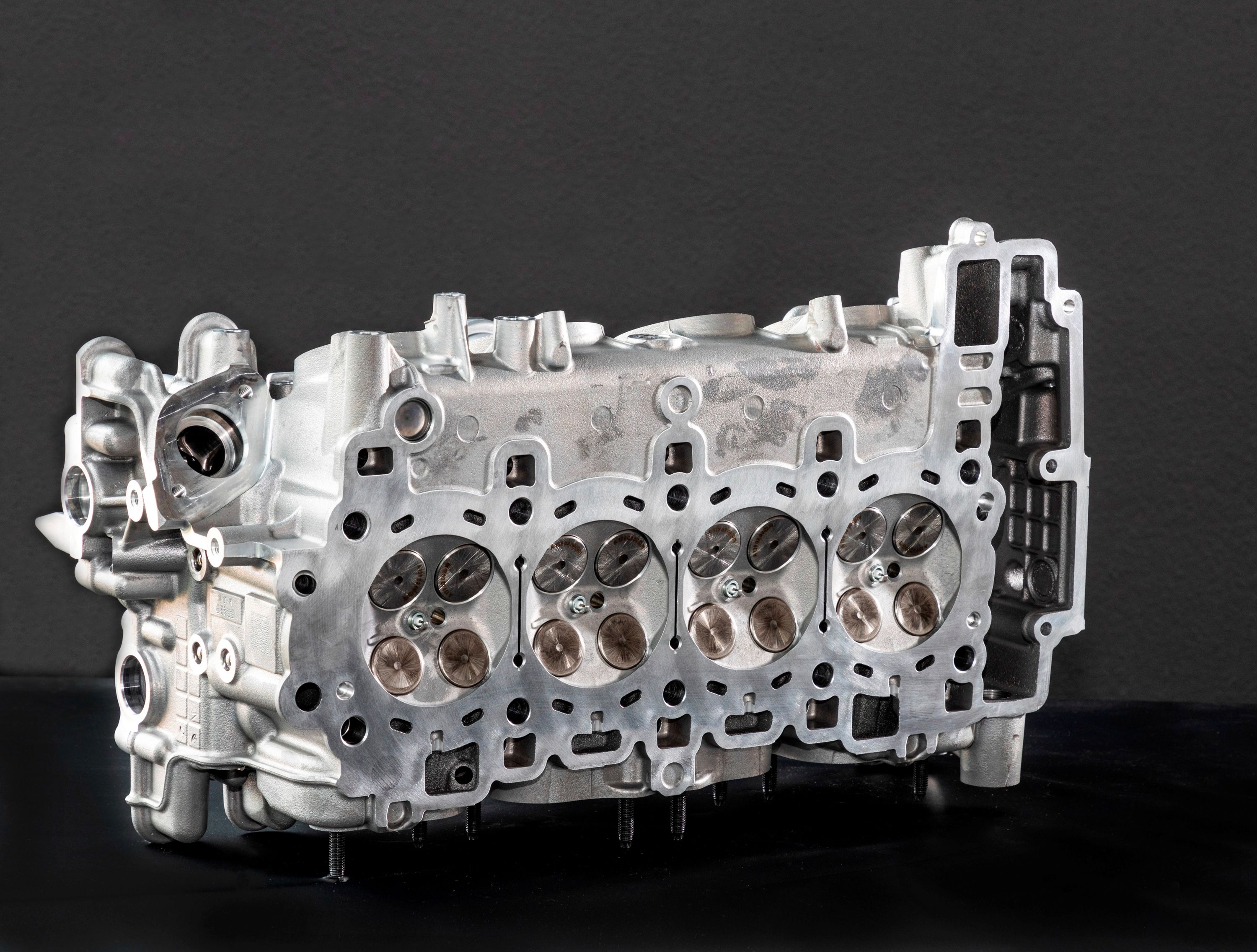
What is a Head Gasket?
We have all heard the term before, but not everyone knows what a head gasket is and what purpose it serves. At the same time, the idea of a blown head gasket induces fear in even the most enthusiastic of gearheads, as the effects of a head gasket failing can be far-reaching. In this discussion, we look at what a head gasket is and how it functions, as well as what the symptoms are when it's not doing its job anymore.
Firstly, a head gasket forms a seal between the engine block and cylinder head. The engine block contains the crankshaft and pistons, and the engine head contains the valves that let air into the engine, the spark plugs, and the fuel injectors. The camshaft can be block- or head-mounted. An engine head cover with its own gasket goes on top of the cylinder head to cover the valve gear.
There are coolant passages that run through the engine block to the cylinder head, which also pass through the head gasket, with the aim of keeping the engine at the right temperature. The second function of the head gasket is to restrict the coolant flow between the cylinder head and the block, so the openings on the head gasket that line up with the coolant passages are smaller in size. It is also designed to prevent oil and coolant from mixing.
The third function of a head gasket is to account for differences in expansion between the engine block and cylinder head, preventing leaks. In the same way, the gasket mitigates any unevenness on the engine block, preventing leaks between pistons, or leaks to the outside of the engine block.
It has to be strong enough to withstand the forces of the combustion pressure while maintaining a positive seal. If this seal is breached, a head gasket leak develops and we say that the head gasket has "blown". This could cause the mixing of oil and coolant. If a blown head gasket sounds serious, it's because it is.
Let's discuss some of the causes of a blown head gasket, and what signs of a blown head gasket to look out for.
What are the Main Causes of a Blown Head Gasket?
The main causes of the typical head gasket leak symptoms include:
- Engine overheating: Overheating causes the metal to expand and compromise the seal on the gasket. Before just replacing the head gasket, the root cause must be fixed first to avoid a recurrence, so read more about overheating problems here.
- Engine hot spots: Some engines have spots that run hotter than other areas, often between the center cylinders, potentially causing a gasket to fail if the correct one with appropriate reinforcements is not used.
- Knock or pre-ignition: Incorrect ignition timing, lean mixtures, or incorrect fuel may cause premature mixture detonation in the cylinders that can break down and erode gasket material.
- Incorrect installation: Incorrect placement of the gasket, an incorrect tightening sequence of the head bolts, re-use of old bolts, and insufficient head-bolt torque could all contribute to gasket failure.
- Material failure: A manufacturing fault or a substandard aftermarket gasket could cause a failure. The acidic nature of an older coolant mixture can also erode the gasket.
Blown Head Gasket Symptoms
These are the possible symptoms of a bad or blown head gasket:
- Smoke from the tailpipe: Coolant escaping into the piston exits the exhaust as white smoke. Read more here on what the various types of smoke might mean.
- Radiator/coolant tank bubbling: Combustion gases forced into a coolant passage create bubbles in the cooling system when the engine is running. A professional mechanic would have the correct test kit to detect incorrect pressures and leaks.
- Coolant loss: Coolant escaping through a gasket to the outside will be noticeable. Coolant escaping internally into the oil or pistons might not be immediately obvious. Either way, the coolant level will drop.
- Milky oil or milky coolant: Coolant mixing with oil turns the oil "milky", and vice versa, reducing the performance of both the cooling and lubrication systems. This can easily be seen by pulling out the dipstick and checking the coolant reservoir.
- Overheating: The continued mixing and loss of the above-mentioned fluids will eventually cause the engine to overheat.
- Power loss: Faulty compression will also cause a loss of engine power; a leak from the combustion chambers will leave the engine running rough.
- Black soot around the engine block: This is an indication of exhaust gasses leaking from the pistons to the outside of the engine.
- Coolant in the cylinder head: There should be only oil in the cylinder head when you remove the valve cover; if you see milky oil, this is a mixture of coolant and oil, and could indicate a leaking head gasket.
Can You Continue to Drive Your Car With a Blown Head Gasket?
Knowing this, can you drive with a blown head gasket? The engine might keep going, but it could misfire, run roughly, overheat, or cause long-term damage. You may experience a significant loss of power, meaning you can't drive at all. Depending on the severity of the gasket damage, you may be driving with a leaking gasket without even knowing it, which is why routine checks and maintenance are so important.
Ideally, it should be repaired as soon as possible to avoid major damage. Remember, with oil and coolant not being able to do their jobs, the entire engine is compromised. No longer able to effectively lubricate and cool the engine, it may actually seize up entirely, prompting an expensive engine block repair or replacement.
How to Fix Your Blown Head Gasket Without Having to Replace it - But Should You?
You may be asking for tricks on how to fix a blown head gasket without replacing it, and while many temporary repair kits are advertised, we caution against it. Minor leaks and slight wear and tear can be temporarily dealt with, but there's no real quick fix for a blown head gasket.
A far better option is to replace the gasket. Although it is possible to do this yourself if you have the know-how, tools, and equipment, it's not a small job at all. How to replace a head gasket is no simple task - we strongly advise you to get professional assistance in this regard.
Conclusion
A properly maintained car in normal use will rarely suffer a blown gasket. However, this useful guide will help you identify a blown gasket, should it happen to you. Whatever you do, never ignore it - it is possible to identify minor leaks before it becomes too serious, so remember to regularly check your engine bay and ensure routine maintenance is done. If you do find yourself in a situation that requires a replacement, rather spend the money to get the gasket replaced than taking shortcuts - it's still cheaper than replacing the engine.




